INTRODUCTION
The ‘Magna Carta of Seafarers’ and its Implementing Rules and Regulations (IRR) reinforce the Maritime Labour Convention (MLC) and the Standards of Training and Watchkeeping Convention (STCW) in Philippine national law. Its goal is to benefit not only Philippine seafarers but also the broader maritime industry. This Risk Bulletin discusses the key impacts and considers both the Magna Carta’s merits and challenges.
BACKGROUND
The Philippines have long been renowned as a source of competent and reliable seafarers with a sound knowledge of the English language. So much so that Philippine seafarers now comprise about 25% of the world’s estimated total 1.9 million seafarer workforce. As such, the Philippines are currently the world’s biggest single source of seafarer supply.
Not surprisingly, the Philippine government is keen to maintain their leading crew supply position and its associated revenue which – through the monthly remittances sent home by Philippine seafarers – amounted to USD$6.71 billion in 2023. These remittances provided a significant contribution to the country’s GDP and gross national income, and they continue to do so.
Several challenging Philippine crew issues which have been faced by the Philippine maritime authorities in past years include:
- Formal complaints to the IMO by the EU’s EMSA and Australia’s AMSA regarding observed and apparent inadequacies in the competence of Filipino seafarers.
- Concerns expressed by shipowner interest groups; including the International Chamber of Shipping (ICS) and the IG P&I Clubs’ Joint Working Committee (JWG) as to:
- The complexity and uncertainty of Philippine seafarer injury and death claims resolution which – under the mandatory application of Philippine jurisdiction and law – includes multiple arbitration and appeal processes (both voluntary and mandatory) up to the Supreme Court level.
- The problem of ‘ambulance chasing’ lawyers who subject seafarers to contingency fees up to 60% of the final award and who prolong the appeal process for personal gain
- The Philippine law entitlement which allows lawyers to issue writs of execution for garnishment orders against shipowners to extract immediate payment of awarded but disputed compensation and despite the fact the shipowner has entered an appeal to a higher court
The Philippine governments of the day have been aware of the above problems and, during the past decade, made ongoing improvements to their maritime training regime and seafarer claims dispute processes. These improvements, together with new and additional seafarer welfare, dispute resolution and training entitlements and obligations, have now been incorporated into the Magna Carta of Seafarers and its supplementary IRR.
The government’s apparent goal has been to fairly and sensibly balance both the commercial interests of the maritime industry and the welfare of Filipino seafarers. Not an easy task and this process – inclusive of extensive stakeholder inquiries – has required several years to accomplish. The important issue now will be as to the efficacy of the Magna Carta as a regulatory tool and, critically, its pro-active and hopefully vigorous enforcement.
MAGNA CARTA’S CONTENT AND PURPOSE
The Magna Carta of Seafarers (Republic Act 12021, 23 Sept. 2024) consists of 21 Chapters and 100 Sections running to 54 pages. It provides a detailed set of requirements covering all aspects of the employment of seafarers.
Content descriptive Chapter headings include: Seafarer Rights, Seafarer Duties, Manning Agents, Terms and Conditions of Employment, Accommodation and Food, Medical Care, Termination of Employment, Dispute Resolution, Repatriation, Manning and Crew Competency, Inspection and Enforcement, Education and Training. Other Chapters advise on the Role of Government Agencies and their specific duties along with Final Provisions which detail the fines and penalties for failures of compliance.
As would be expected, much of the content is focused on restating the rights and obligations set out in the MLC and confirming pre-existing Philippine legislation relating to maritime training and the obligations set out in the STCW. The balance of the Magna Carta seeks to make clear the functions and obligations of all the parties- both public and private – involved in its successful implementation.
Space constraints do not permit the provision of a synopsis of the content of each Magna Carta Chapter and Section. However, there are several Magna Carta Sections which are of special importance with respect to the shipping interest concerns noted above and the defence of crew injury and death claims. They are summarised as below:
Section 56 – Maritime Industry Labour Conciliators-Mediators-Arbitrators
Provides for the establishment of a pool of trained maritime industry Conciliators-Mediators-Arbitrators – under the auspices of the designated government agencies. Further, that the relevant authorities should form a “specialised maritime unit” and “should issue appropriate maritime industry dispute settlement rules of procedure”.
NOTE: These provisions are sensible and should assist the reliability, acceptance and speed of the dispute resolution services referred to above.
Section 59 – Execution of Judgement and Monetary Awards
Firstly: This provides that the ‘writ of execution’ and garnishment process will now only be permitted if the seafarer has first posted a bond – as issued by an approved bond provider – in the amount of the disputed claim. Assistance to the seafarer to pay for the bond or related insurance may be provided by the Department of Migrant Workers (DMW). The bond will be held pending the final resolution of the claim. If the claim is resolved in favour of the seafarer, the shipowner must reimburse the entire cost of the bond to the seafarer. If the seafarer loses, he/she bears the cost of the bond.
Secondly: It reiterates the provisions of the Republic Act 10706 of 2015 which mandates the prevention of ambulance chasing through the prosecution or disbarment of the lawyer or lawyers involved.
NOTE: Concerns have been expressed as to the complexity of the bond process and its constitutionality. However, the bond process for other claims scenarios is already well established and bond providers are readily available. It is also reported that the largest seafarers’ union in the Philippines, AMOSUP, have not raised any published objections to the Section 59 bond process on either complexity or constitutional grounds.
Section 60 – Prohibition of Appearance and Fees
Firstly: This reiterates the provisions of Republic Act 10706 which limits lawyer contingency fees to 10% of the final award.
Secondly: It provides that seafarers’ lawyers, “…shall not lend or borrow money from the seafarers, or participate in usurious lending practices, and shall not directly or indirectly recommend, endorse, or facilitate loans with lending individuals or companies connected to seafarers”.
NOTE: Regarding the Section 59 and 60 reiterations of the Republic Act 10706 of 2015 (designed to constrain the nefarious activities of lawyers) it seems this Act had no useful impact during the past 9 years on reducing ambulance chasing or preventing contingency fee gouging. This may have been due to failures of enforcement. If so, the Magna Carta’s reiteration of the constraints on lawyers will not provide the protection intended unless they are vigorously enforced.
IMPLEMENTING RULES AND REGULATIONS (IRR) CONTENT AND PURPOSE
The issue of IRRs providing explanatory support of Philippine legislation appears to be a common practice. The Magna Carta’s IRR was signed on 8 Jan 2025. It states its purpose as being:
“…to prescribe the procedures and guidelines for the implementation of the “Magna Carta of Filipino Seafarers” … to facilitate compliance therewith and to achieve the objectives thereof.”
The IRR runs to 43 pages and consists of 22 Rules, with each Rule containing numbered Sections which correlate with the numbered Chapters of the Magna Carta. The IRR must be read in conjunction with the Magna Carta to ensure correct interpretation and implementation.
NOTE: As a Magna Carta Chapter and IRR Rule correlation example, Magna Carta Chapter XI, Dispute Resolution for Overseas Seafarers, is supplemented by IRR Rule XI with the same title.
APPLICATION OF THE MAGNA CARTA AND IRR
The Philippine Magna Carta and the IRR are now fully in force. As advised by IRR Rule I, Section 4.1, the Magna Carta and its IRR apply to:
“… Filipino seafarers who are engaged, employed, or who work in any capacity on board a ship or vessel plying international waters, whether Philippine-registered or foreign registered.”
Regarding the Philippine domestic trade, IRR Rule I, Section 4.2 provides as follows:
“Seafarers who are engaged, employed, or who work in any capacity on board domestic ships shall be principally covered by Presidential Decree No. 442, otherwise known as the “Labor Code of the Philippines”, as amended, and by other applicable laws, rules, and regulations.”
Section 4.2 then lists the Rules of the IRR which apply to domestic ship seafarers. None of the listed Rules relate to claims for injury or death and resolution procedures.
NOTE: Parties who are involved in Philippine domestic seafarer injury or death claims and their resolution will need to refer to Presidential Decree No. 442 together with the specified sections of the Magna Carta and IRR.
CONCLUSION AND TAKEAWAY
Responses to the implementation of the Philippine Magna Carta of Seafarers and its IRR have ranged from an ecstatic ‘a gift to seafarers’ to criticism of the disputed claim bond requirements as ‘unworkable or ‘unconstitutional’. The reality – inclusive of the Philippine Government’s ability to implement and enforce the Magna Carta to the satisfaction of both Philippine seafarers and the global maritime industry – probably lies somewhere in between the extremities of these responses.
If successful, Magna Carta positive outcomes would include more and higher skilled jobs for Philippine seafarers together with improved work safety, medical care and job security. There would also be relief from abuse by ambulance chasing lawyers through prompt and fair resolution of injury and death claims by specially trained arbitrators of the highest integrity. In turn, Members would benefit from improved crew productivity, fewer accidents, improved dispute resolution and reduced medical and legal expenses. In short, and using a hackneyed expression, a ‘win-win’ for all concerned. Maritime Mutual Insurance Association (MMIA) are hopeful that the Magna Carta and its IRR will provide a positive ‘sea-change’, proving mutually beneficial to all parties concerned, inclusive of all MMIA Members who employ Philippine seafarers on board their vessels.

